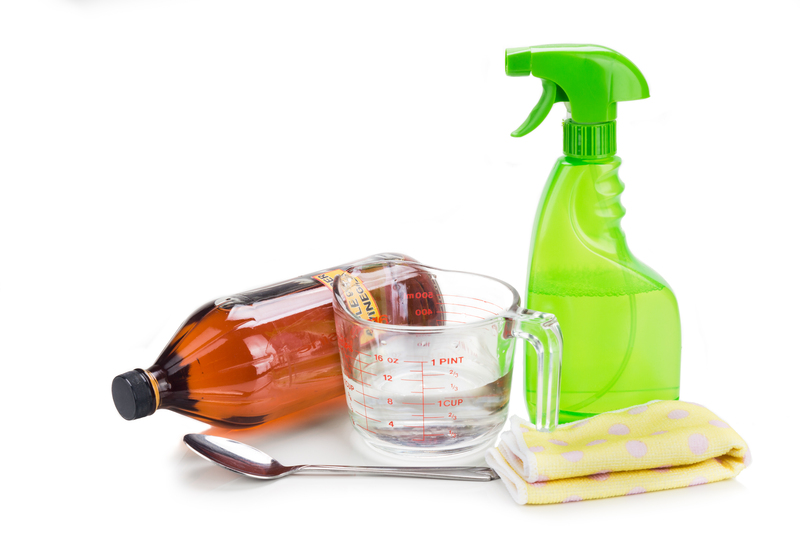Banish Mold from Window Sills like a Pro
Posted on 20/06/2025
Banish Mold from Window Sills like a Pro: The Ultimate Guide
Are you struggling with mold buildup on your window sills? You're not alone. Not only is mold unsightly, but it can also seriously affect your home's air quality and your family's health. Banish window sill mold for good by using professional tips and effective products. In this comprehensive, SEO-friendly guide, you'll discover how to eradicate mold from window sills, prevent its return, and maintain a healthy living environment.
Understanding Mold on Window Sills
Before you start removing mold from window sills, it's essential to understand why it appears in the first place. Mold is a type of fungus that thrives in damp, dark environments, which unfortunately makes window sills a perfect breeding ground, especially in humid climates or poorly ventilated rooms.
Common Causes of Mold on Window Sills
- Poor Ventilation: Windows that are rarely opened can trap moisture, encouraging mold growth.
- Condensation: Fluctuations in indoor/outdoor temperatures can lead to condensation on windows and sills.
- Water Leaks: Cracked caulk or damaged window seals allow water to seep in, creating a moist environment for mold spores.
- High Humidity: Areas with high relative humidity provide the necessary moisture mold loves.
Why It's Critical to Remove Mold from Window Sills Promptly
Mold isn't just a cosmetic issue; it can have significant impacts on your health and your home's structure. Mold spores can cause symptoms such as coughing, sneezing, skin irritation, and eye discomfort. In people with asthma or allergies, mold exposure can be particularly problematic.
- Health Risks: Extended exposure to mold can worsen respiratory issues.
- Structural Damage: Mold can eat into wood and paint, damaging your window frame and sill.
- Aesthetic Concerns: Black or green stains are unsightly and can reduce your home's value.

How to Banish Mold from Window Sills like a Pro
Step 1: Gather Your Supplies
To clean mold off window sills effectively, preparation is key. Here's what you'll need:
- Cleaning Solution: Choose between commercial mold removers, white vinegar, hydrogen peroxide, or a bleach solution (mix 1 cup bleach in 1 gallon of water).
- Protective Gear: Gloves, goggles, and a mask to prevent inhaling spores.
- Scrubbing Tools: Use a soft-bristled brush or an old toothbrush for nooks and corners.
- Microfiber Cloths or Paper Towels: For wiping surfaces clean.
- Spray Bottle: For applying your cleaning solution.
- Plastic Garbage Bag: For disposing of contaminated materials.
Step 2: Safety First! Prepare the Area
- Open a Window: Ensure the area is well-ventilated to disperse any airborne spores.
- Protect Surroundings: Lay down old towels or plastic sheeting to catch spills and debris.
- Wear Protective Gear: Gloves, goggles, and a mask are a must to safeguard yourself from spores and harsh chemicals.
Step 3: Remove Visible Mold Growth
- Spray the Moldy Area: Generously apply your chosen cleaning solution to the affected window sill.
- Let It Sit: Allow the cleaner to work for at least 10-15 minutes. This loosens the mold and kills spores.
- Scrub Thoroughly: Use your brush or toothbrush to scrub all visible mold. Pay special attention to crevices and corners!
- Wipe Clean: Use a damp microfiber cloth or paper towel to remove loosened mold and residue.
- Dispose Properly: Place used cloths, towels, or paper in a sealed plastic bag and discard.
Step 4: Disinfect and Deodorize
- Repeat If Necessary: For stubborn stains, repeat the spraying and scrubbing process.
- Rinse: Wipe down the area with a clean, damp cloth to remove any remaining cleaning solution.
- Disinfect: Finish with an antimicrobial spray or wipe to eliminate any lingering spores and prevent regrowth.
- Dry Thoroughly: Use a dry towel or paper towel to ensure the window sill is completely dry.
Step 5: Inspect and Repair
- Inspect Sills and Frames: Look for cracks, peeling paint, or damaged seals, as these allow moisture to seep in.
- Seal and Paint: Caulk up gaps and consider repainting with mold-resistant paint for long-term protection.
Proven Cleaning Solutions for Moldy Window Sills
Natural Options
- Vinegar: Spray straight white vinegar onto the mold, let it sit for an hour, then scrub and wipe clean. Vinegar is a natural mold killer and leaves no residue.
- Hydrogen Peroxide: Use 3% hydrogen peroxide in a spray bottle, apply liberally, and let it bubble for at least 10 minutes before scrubbing and wiping.
Chemical Options
- Bleach: Highly effective for stubborn black mold. Mix 1 cup bleach in 1 gallon of water and follow the instructions above.
- Commercial Mold Removers: Products like Mold Armor or Concrobium can be used as directed on packaging.
Note: Never mix cleaning solutions, especially bleach with vinegar or ammonia, as it produces toxic fumes.
How to Prevent Mold from Returning on Window Sills
Now that you've banished window sill mold, how do you stop it from coming back? Prevention is all about managing moisture and improving airflow.
Top Tips for Mold Prevention
- Improve Ventilation: Open windows regularly, use exhaust fans in humid rooms, and leave interior doors open to allow air circulation.
- Use a Dehumidifier: Especially important in damp climates or during the wet season. Keep indoor humidity below 50% if possible.
- Fix Leaks Promptly: Address leaking pipes, broken seals, or cracked caulk around windows immediately.
- Insulate Windows: Prevent condensation by installing double-glazed windows or using window insulation kits in winter.
- Regular Cleaning: Wipe window sills with a vinegar-water solution every few weeks as a preventive measure.
Invest in Mold-Resistant Products
- Mold-Resistant Paint: Especially useful for wooden window sills. Available at most hardware stores.
- Anti-Mold Sealants: Use around windows to stop moisture ingress.
- Weather Stripping: Helps eliminate drafts and excess moisture seepage.
DIY vs. Professional Mold Removal: When to Call the Experts
Most cases of mold on window sills can be removed by homeowners, but certain situations may require professional help. If you notice:
- Extensive Mold Growth: If the affected area is larger than 10 square feet, or mold appears inside the wall or window frames, call a pro.
- Persistent Moisture Problems: Chronic leaks or underlying issues may need expert diagnosis and remediation.
- Health Concerns: If family members experience lingering allergic reactions, get professional testing and cleaning.
The Benefits of Hiring Professionals
- Thorough Assessment: Pros can check for hidden mold and moisture sources.
- Advanced Tools: HEPA vacuums, industrial-strength cleaners, and moisture meters ensure effective remediation.
- Guaranteed Results: Professionals offer warranties and long-term solutions.

Frequently Asked Questions (FAQ) About Window Sill Mold
Q1: Is black mold on window sills dangerous?
Yes, certain species of black mold produce toxins that can cause respiratory problems and allergic reactions, especially in sensitive individuals. Safe and prompt removal is essential.
Q2: How often should I clean my window sills to prevent mold?
As a preventive measure, it's wise to wipe down window sills every 2-4 weeks, especially during rainy or humid seasons.
Q3: Can I paint over mold on my window sill?
Never paint over mold. Paint will not kill the fungus and can lead to further problems as mold continues to grow beneath the surface. Always clean and disinfect thoroughly before painting.
Q4: What is the best cleaner to remove mold from window sills?
Vinegar and hydrogen peroxide are excellent natural options, while diluted bleach and commercial mold removers offer the strongest cleaning power for stubborn growths.
Q5: Why does mold keep coming back on my window sills?
Recurring mold is usually a sign of persistent moisture--leaks, condensation, or poor ventilation. Address the underlying issue and maintain dryness to prevent recurrence.
Conclusion: Enjoy Mold-Free Window Sills for Good!
With these proven strategies for removing and preventing mold from window sills, you can restore your window frames to their original beauty and enjoy a healthier home environment. Regular maintenance, prompt repairs, and effective cleaning habits are the best ways to banish window sill mold like a pro. If you follow the steps outlined above, you'll be able to keep unsightly and dangerous mold at bay year-round.
Ready to tackle that window sill mold? Arm yourself with the tips from this guide and say goodbye to mold for good!
Related Articles You May Like
- How to Remove Mold from Bathroom Tiles
- Best Dehumidifiers for Mold Prevention
- Painting Tips for Damp-Prone Areas
Share your own window sill mold removal tips or ask questions in the comments below!



